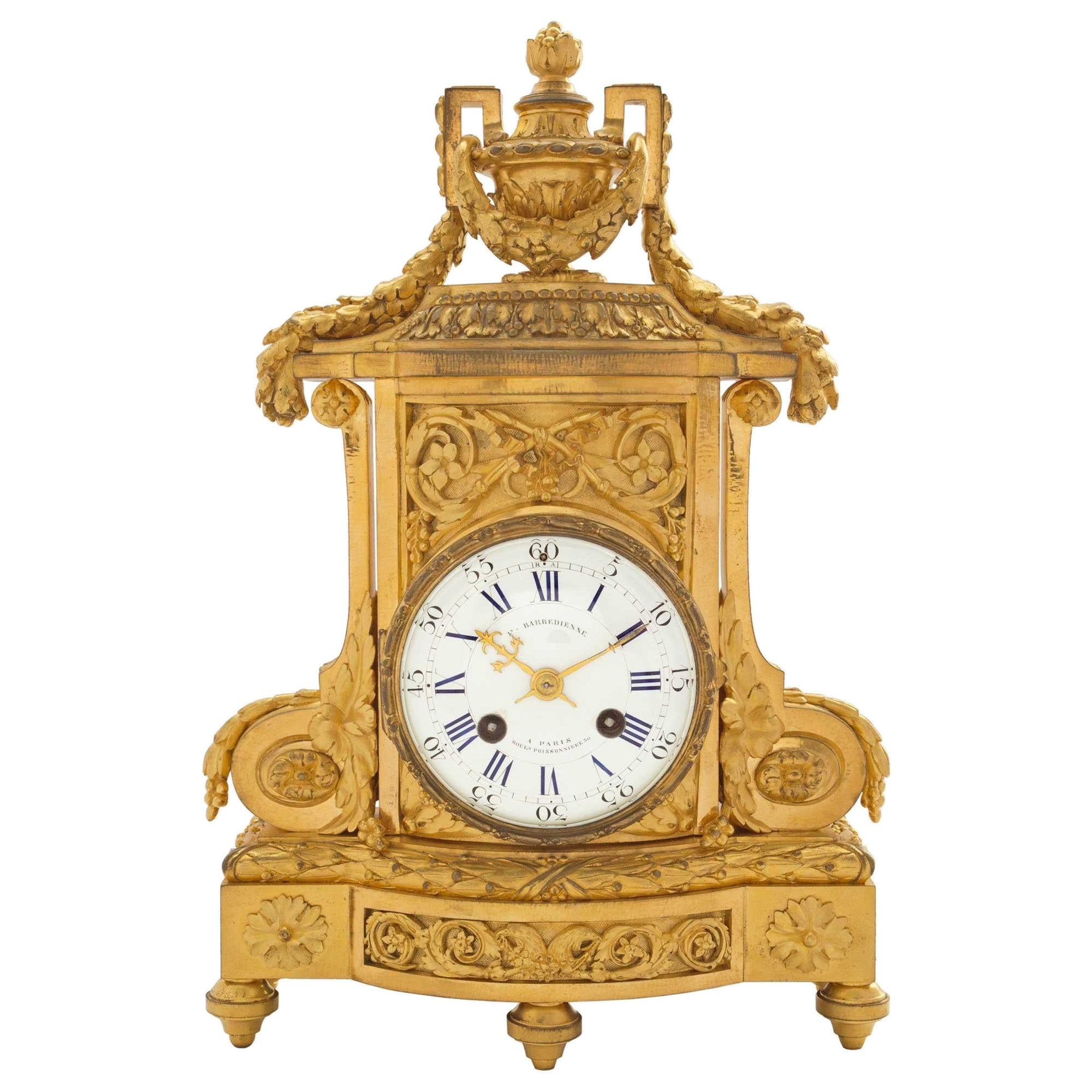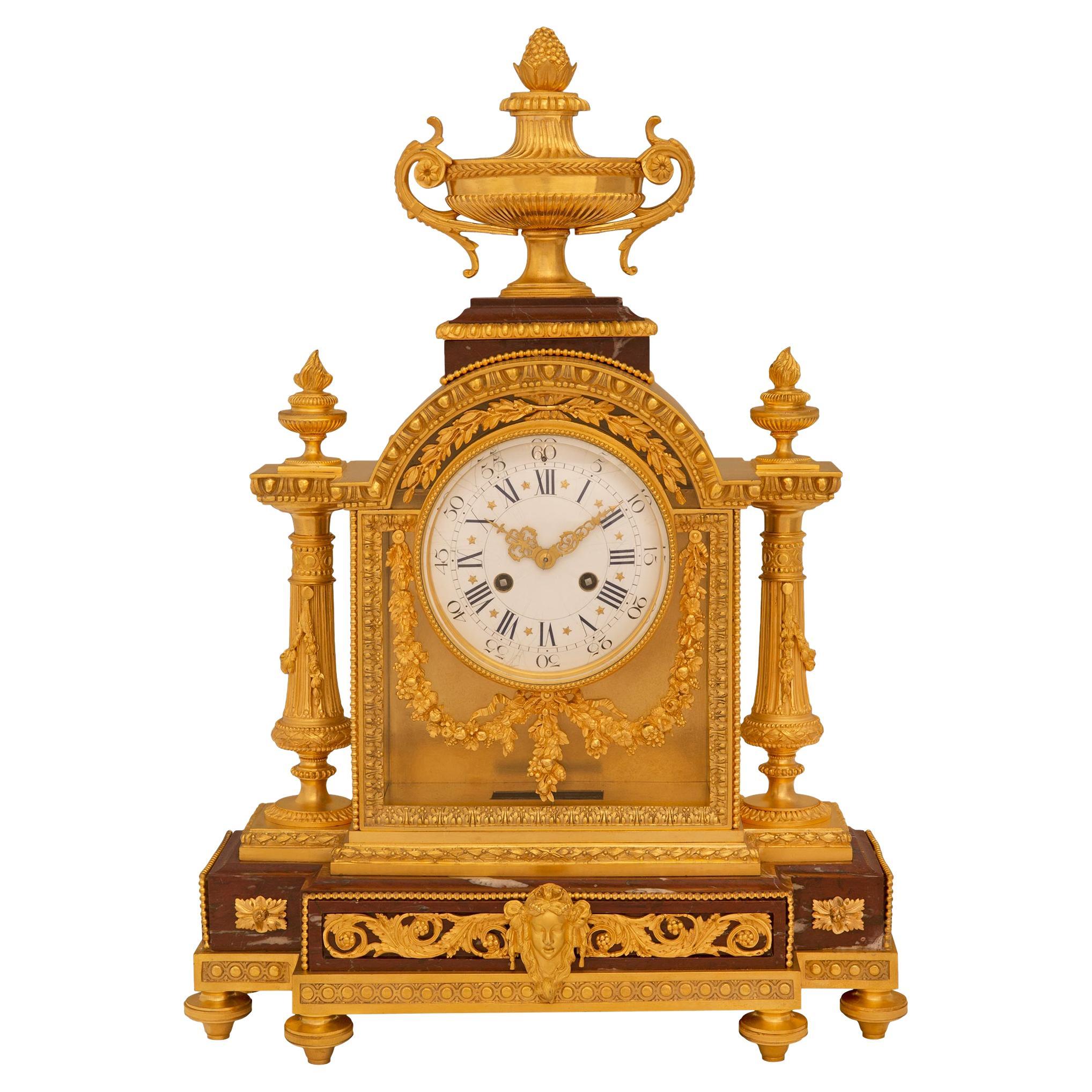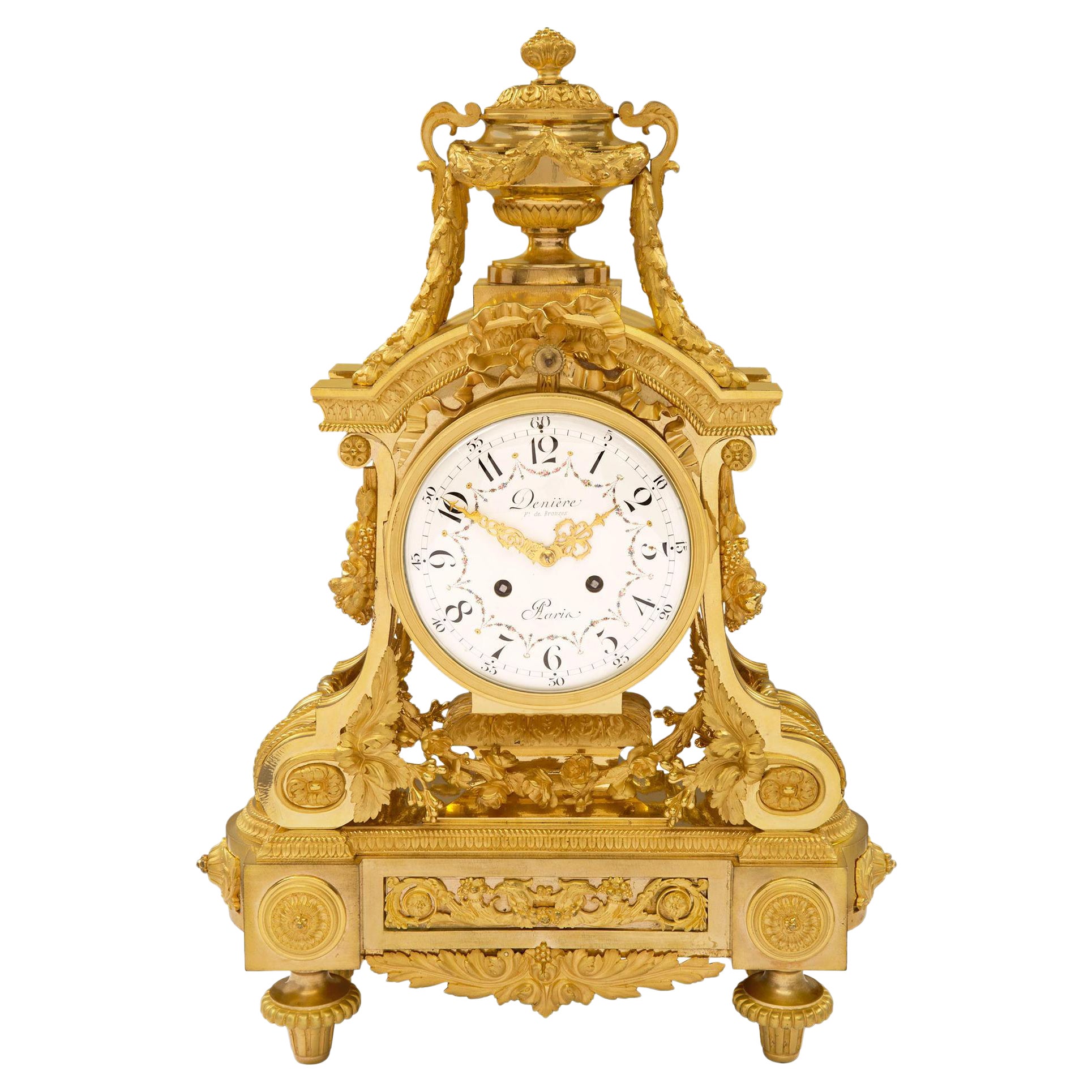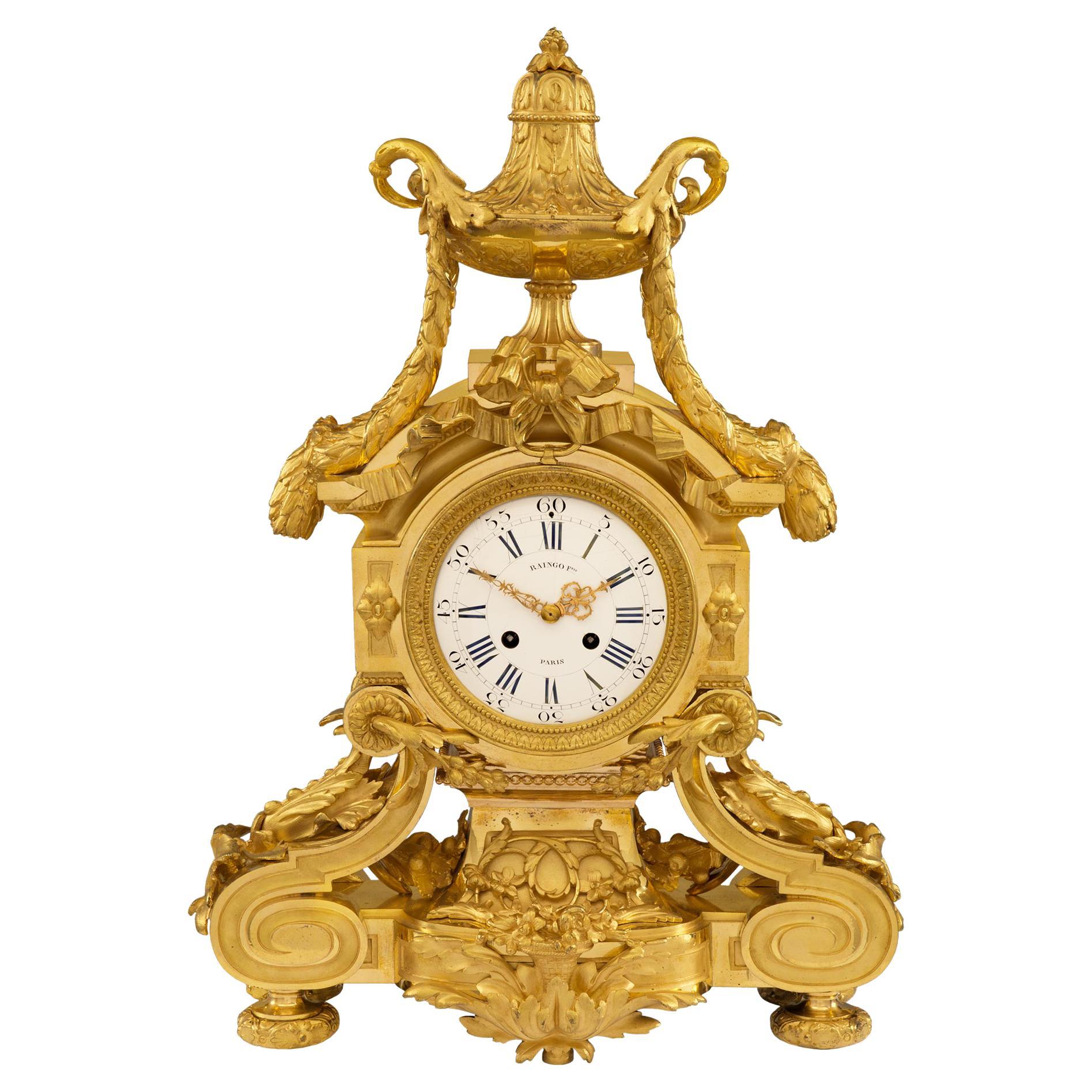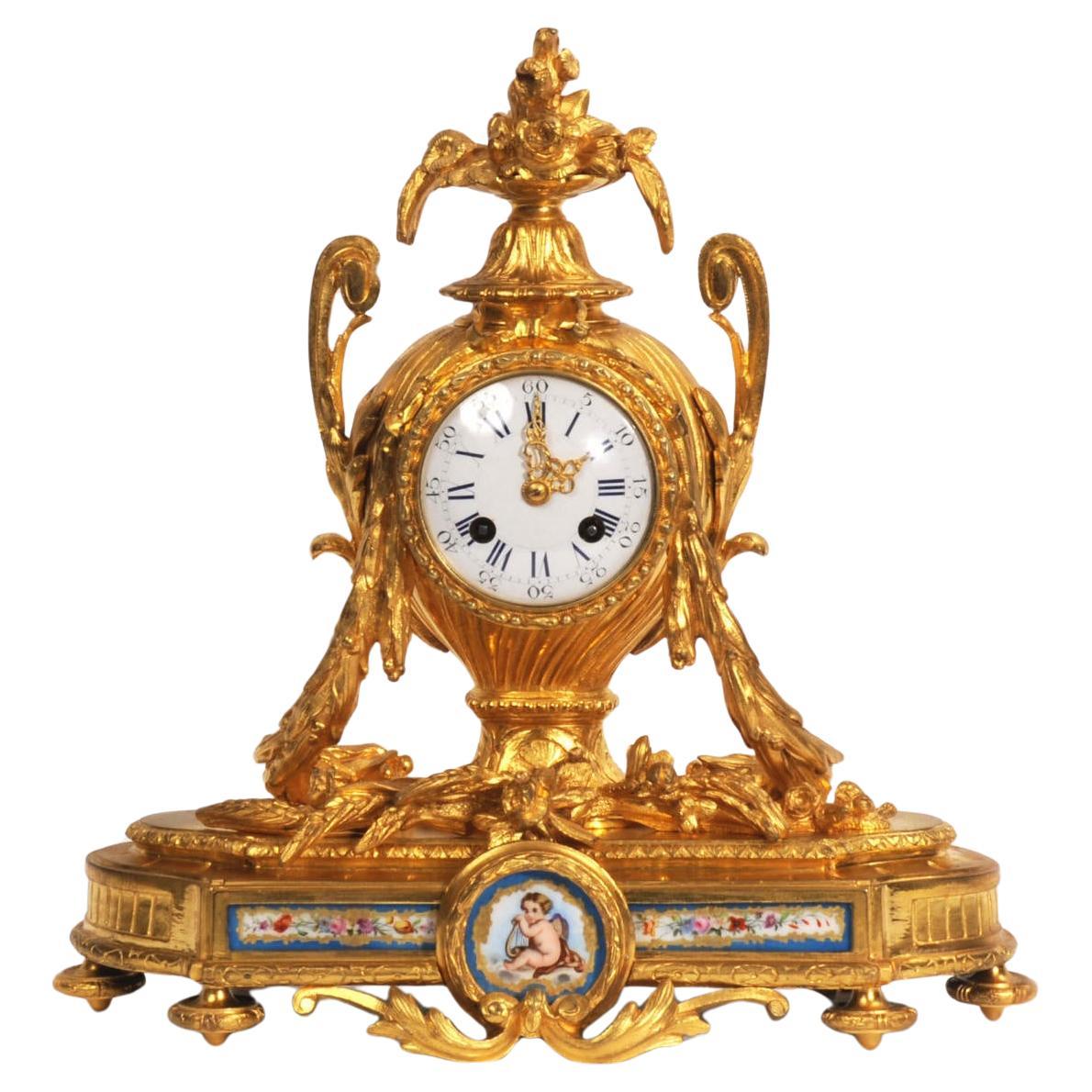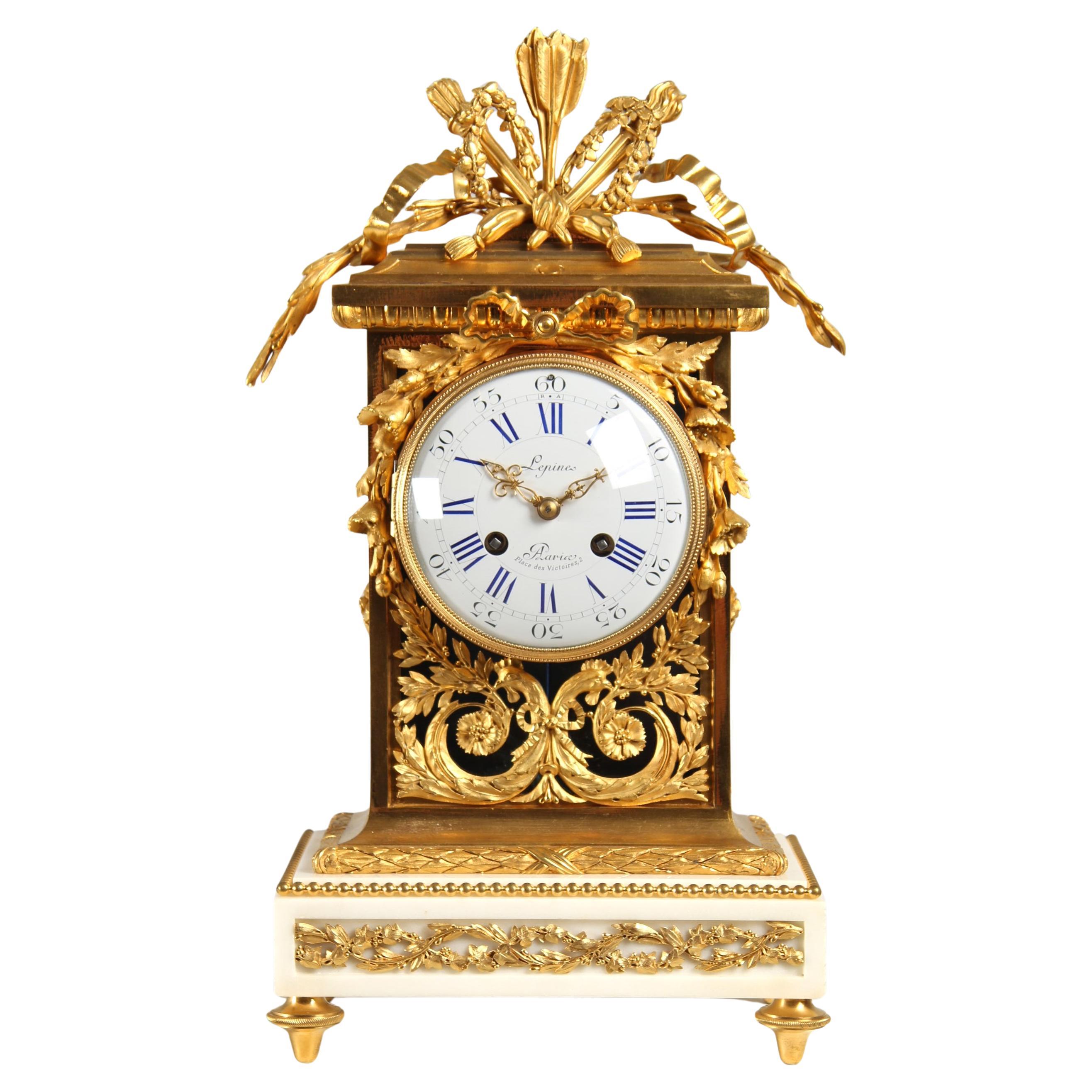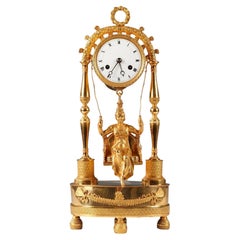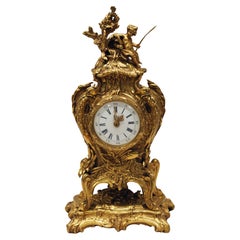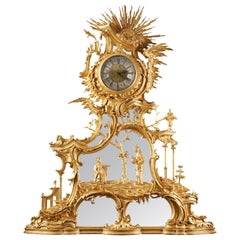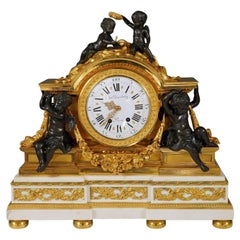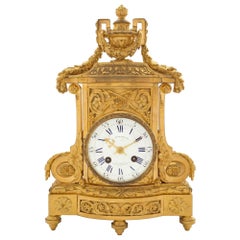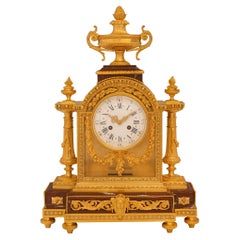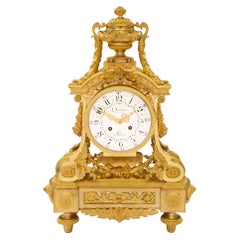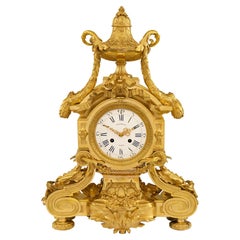G. Denière, "Pendule à cage", France, circa 1860
About the Item
- Creator:Guillaume Denière (Maker),Henri Picard (Metalworker)
- Dimensions:Height: 34.26 in (87 cm)Width: 22.84 in (58 cm)Depth: 9.45 in (24 cm)
- Style:Louis XVI (In the Style Of)
- Materials and Techniques:
- Place of Origin:
- Period:
- Date of Manufacture:circa 1860
- Condition:Wear consistent with age and use.
- Seller Location:PARIS, FR
- Reference Number:1stDibs: LU3860345609202
Henri Picard
Henri Picard was a 19th-century gilder who is said to have graced Paris with his stunning furniture and decor from 1831 to 1864. His bronze pieces included exquisitely detailed candelabras, ornate clocks and sculptural table lamps.
Each item cast and gilded by the talented Picard represented the marriage of function and beauty and is a notable example of Napoleon III-style design. Developing from 1852–70, Napoleon III furniture was plush and ornate, matching the fashion for masked balls and socializing in salons.
Picard was particularly known for his artistry — his body of work includes expertly cast gilt bronze (ormolu) mounts for a range of porcelain vessels produced by Sèvres, a maker of exemplary European ceramics for hundreds of years. Picard collaborated with many designers of his day and worked for a firm called Defreville. And while Picard received numerous commissions, his most notable was designing decorative objects for Napoleon III. The pieces are still displayed at the Napoleon III Apartments in the Louvre Museum, Paris.
Picard also designed mantel clocks for the prestigious French clock-making company Raingo Frères. The manufacturer’s clocks are also on display in the Napoleon III Apartments.
On 1stDibs, find antique Henri Picard decorative objects, lighting, case pieces and more.
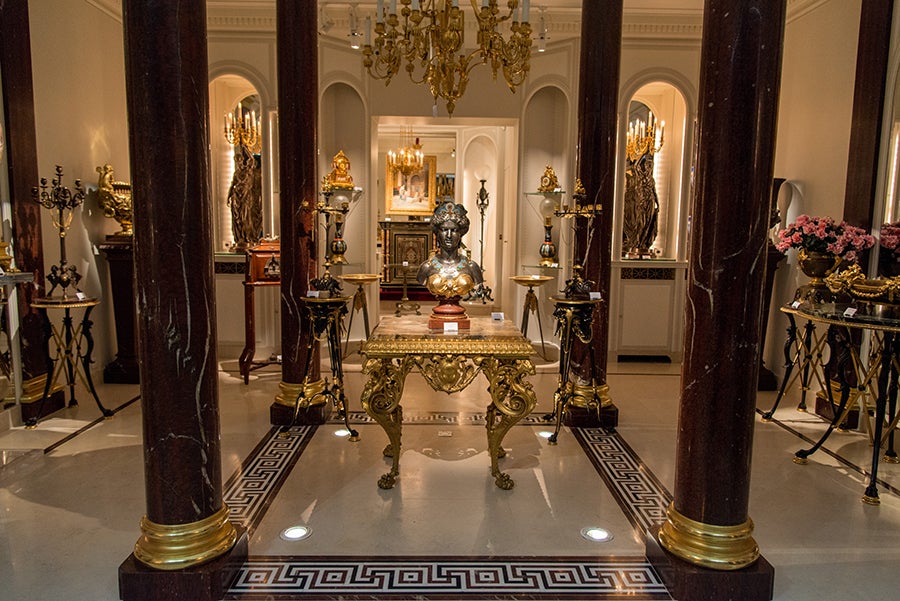
- ShippingRetrieving quote...Shipping from: PARIS, France
- Return Policy
More From This Seller
View AllAntique 1820s French Restauration Mantel Clocks
Bronze
Antique 1890s French Rococo Revival Table Clocks and Desk Clocks
Bronze, Enamel
Antique 1860s English Chinese Chippendale Mantel Clocks
Giltwood
Antique 1870s French Louis XVI Mantel Clocks
Marble, Bronze
Antique 1830s French Mantel Clocks
Bronze
Antique 1860s French Louis XVI Mantel Clocks
Marble, Bronze
You May Also Like
Antique 19th Century French Louis XVI Mantel Clocks
Ormolu
Antique 19th Century French Louis XVI Mantel Clocks
Griotte Marble, Ormolu
Antique 19th Century French Louis XVI Mantel Clocks
Ormolu
Antique 19th Century French Belle Époque Mantel Clocks
Ormolu
Antique 19th Century French Louis XVI Mantel Clocks
Ormolu
Antique 1870s French Louis XVI Mantel Clocks
Carrara Marble, Ormolu
